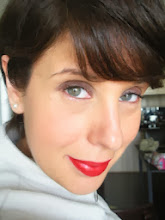It was so interesting to see the pattern of colours that harmonized with this base shade - they were all colours that 'fit' so well with the natural palette that I've been researching/creating. All the various shades of dusty-taupe pinks, soft blues, grey and even some warm pinks looked 'fantastic' when you put them side by side with the Fawn Beige and the next deeper colour sample! My friend on the other hand, got matched up to a more golden colour sample and the orange-coral, warm aqua shades were so harmonious and elegant next to her skin tone base colour sample. I think that colour analysis is fascinating and I'll always be interested in finding my 'best' colours, because it's an important part of how you present your 'Best' Self. However, what I don't like about colour analysis is how the palettes can restrict people into only belonging into one particular season/palette. Furthermore, getting draped and getting your 'colours done' should not cost a ridiculous price when you can 'do it yourself' for free. It just takes patience, self-study and being honest with yourself about what suits your particular skin tone. I'm just getting started with my 'do it yourself' colour analysis project. I'm going to create/put together my own personalized palette - I'm even going to give it an original name :)
Wednesday, May 27, 2015
Do It Yourself Colour Analysis
For the last little while, I've been focused on creating a very personalized palette that is not related to other forms of colour-analysis. I still like to research and read about colour analysis, but I find it too restrictive and I'm seeing more and more cases of people crossing over into multiple seasons. I like David Zyla's approach to colour analysis and finding a very personalized palette based on the colours that already exist within your skin, hair, eyes etc. Recently, I came across a video (but can't find/remember the link) that showed how you can create a 'do it yourself' colour analysis. It involves going to the paint store and finding colour chips/testers of a shade that is the 'closest' to your skin tone. From that 'base' colour, you can then examine how other colours 'fit' or are in harmony with your base shade, as well as examining all the other colours present naturally in your skin, hair eyes etc. I went to the paint section of a local store and tried this experiment. I went with a friend of mine that is different in skin tone to see how well this 'do it yourself' system would work. She has a golden skin tone and looks amazing in corals and warm turquoise shades. We both testing the various colour samples and found our base. Hers was a golden beige-tan shade and this was mine - Fawn Beige, a taupey-deeper beige shade:
Subscribe to:
Post Comments (Atom)


No comments:
Post a Comment